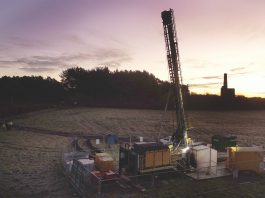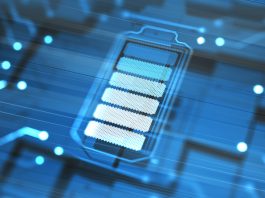Researchers have made a breakthrough that could transform battery usage by developing a ‘self-healing’, stable lithium-metal solid state battery.
Researchers at Harvard John A. Paulson School of Engineering and Applied Science (SEAS) have developed a stable, lithium-metal solid state battery that can be charged and discharged at least 10,000 times. This new battery technology may be able to increase the lifetime of electric vehicles to match that of gasoline cars – between ten to 15 years – without requiring a battery change.
Long-lasting and quick-charging batteries are vital to the development of the electric vehicle industry, but current lithium-ion batteries are not up to the needed standards, as they are too heavy and take too long to charge.
For years, researchers have attempted to utilise the potential of solid-state, lithium-metal batteries, which hold significantly more energy in the same volume, and charge in a much smaller timeframe than conventional lithium-ion batteries.
“A lithium-metal battery is considered the holy grail for battery chemistry because of its high capacity and energy density,” said Xin Li, Associate Professor of Materials Science at Harvard SEAS. “But the stability of these batteries has always been poor.”
The team, which has published its research in the journal Nature, has paired the novel design with a commercial high energy density cathode material.
“Our research shows that the solid-state battery could be fundamentally different from the commercial liquid electrolyte lithium-ion battery,” commented Li. “By studying their fundamental thermodynamics, we can unlock superior performance and harness their abundant opportunities.”
To date, the greatest challenge with lithium-metal batteries is chemistry: lithium batteries push lithium ions from the cathode to the anode during charging. When the anode is composed of lithium metal, needle-like constructs known as dendrites form on the surface. These constructs grow like roots into the electrolyte and pierce the barrier separating the anode and cathode, resulting in the battery being to short or potentially catching fire.
In order to surmount this difficulty, the researchers designed a multilayer battery that sandwiches various materials of differing stabilities between the anode and cathode. This multilayer, multimaterial battery prohibits the infiltration of lithium dendrites by containing and controlling them.
Co-author of the paper and graduate student at SEAS, Luhan Ye, explained: “Our strategy of incorporating instability in order to stabilise the battery feels counterintuitive but just like an anchor can guide and control a screw going into a wall, so too can our multilayer design guide and control the growth of dendrites.”
The battery is also self-healing, meaning its chemistry enables it to backfill holes created by the dendrites.
Li added: “The difference is that our anchor quickly becomes too tight for the dendrite to drill through, so the dendrite growth is stopped. This proof-of-concept design shows that lithium-metal solid-state batteries could be competitive with commercial lithium-ion batteries.
“And the flexibility and versatility of our multilayer design makes it potentially compatible with mass production procedures in the battery industry. Scaling it up to the commercial battery won’t be easy and there are still some practical challenges, but we believe they will be overcome.”









